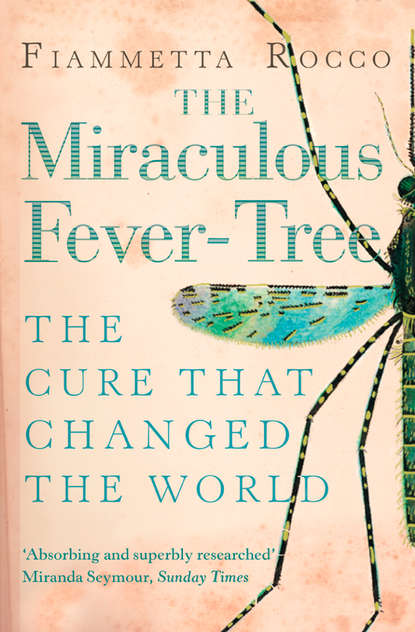
Полная версия:
The Miraculous Fever-Tree: Malaria, Medicine and the Cure that Changed the World
The walls were covered from floor to ceiling with solid oak shelves laden with bottles and flasks. Several tables and chairs were spread around the room, made of wood imported from Chile, and in the centre of the room was a long, wide mahogany counter of a beautiful reddish-brown colour. On top of the counter, in sharp contrast to the dark heavy wood, rested four delicate scales.
The three black employees who worked in the pharmacy spent their day in the laboratory, a forest of glazed earthenware and shiny instruments, some of lead or bronze, some of pure silver. The laboratory was filled with large jugs, scales, all kinds of stills used for distilling liquids, glass and metal funnels of all shapes and sizes, crystal flasks, retorts and matrasses, gridirons and hand mills, pumping engines and ovens, condensers and cauldrons, handsaws and sieves.
Brother Salumbrino’s Jesuit masters might have been uncomfortable in that room, with its heavy fumes and thick, unpleasant odours of medicines and chemicals, but they would have been happy to know that in San Pablo’s pharmacy he and his brother pharmacists had the means to preserve and restore the health of the hundreds of priests working in the field. The final inventory of the pharmacy includes more than five hundred medicines, in addition to the books in the library and the vast quantity of stills, bottles and other material that filled the laboratory’s shelves. Of the medicines in the pharmacy, by far the most valuable was una grande tinafa – a great jar – of cinchona bark, which is valued at one hundred pesos.
Despite the excellence of its pharmacy, the small world of San Pablo was about to be engulfed in political events that were fuelled, as so often happens, by fear and greed. Secret orders had arrived from Madrid: the Society of Jesus was to be expelled from the whole of the Spanish Empire on the orders of King Charles III, who feared its swelling power and longed to own its properties and who finally, after many decades, had chosen to believe the Jesuits’ enemies who had long tried to discredit them in the eyes of Charles and his court.
At four o’clock in the morning of 9 September 1767 the Viceroy, Don Manuel de Amat, had everything ready to carry out the King’s instructions in Peru. Four hundred soldiers were stationed within the viceregal palace. In the dead of night a number of the most important men in Lima also arrived at the back door of the palace, summoned by a handwritten note from Amat that read, ‘I need you for matters of great service to the King, and I warn you to come so secretly that not even those of your household would realise that you had gone out.’
Конец ознакомительного фрагмента.
Текст предоставлен ООО «ЛитРес».
Прочитайте эту книгу целиком, купив полную легальную версию на ЛитРес.
Безопасно оплатить книгу можно банковской картой Visa, MasterCard, Maestro, со счета мобильного телефона, с платежного терминала, в салоне МТС или Связной, через PayPal, WebMoney, Яндекс.Деньги, QIWI Кошелек, бонусными картами или другим удобным Вам способом.
Вы ознакомились с фрагментом книги.
Для бесплатного чтения открыта только часть текста.
Приобретайте полный текст книги у нашего партнера:
Полная версия книги
Всего 10 форматов



